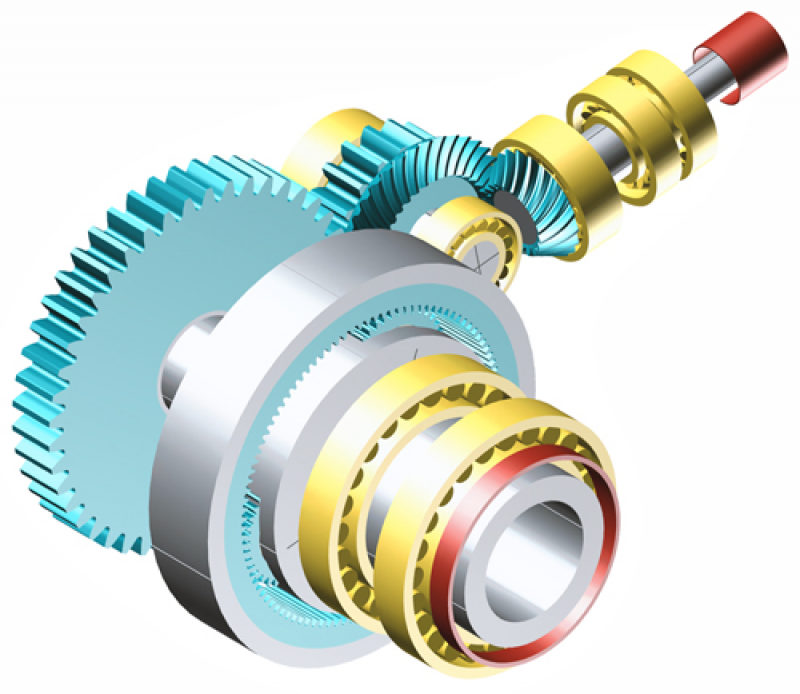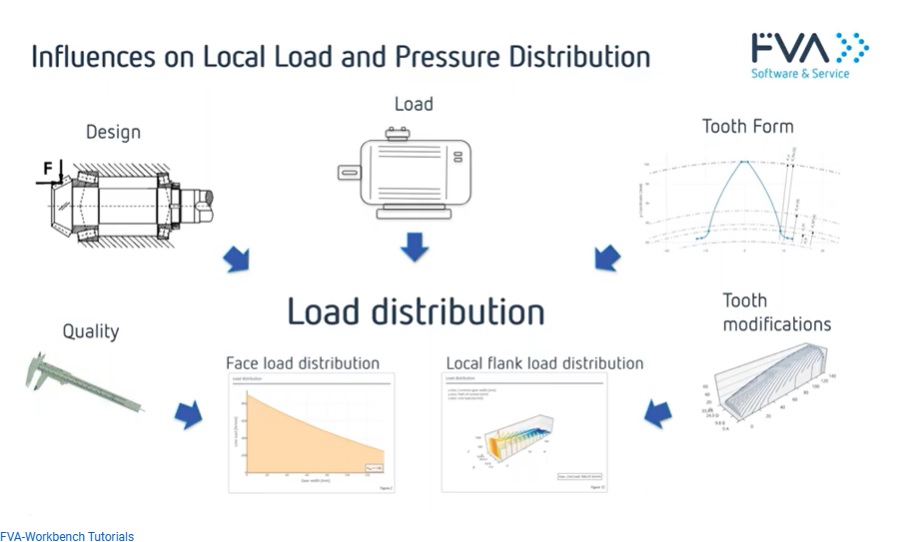KISSsoft Examines Bevel Gear Strength Rating

Strength rating of bevel gears according to standards such as ISO, AGMA, etc. is executed based on virtual cylindrical gears, only modified by a few specific bevel gear factors. The rating methods of these standards also include the calculation of permissible stresses and finally result in safety factors.
The contact analysis for bevel gears allows a calculation of the stresses. It considers the individual flank modifications such as crowning, twist, etc., including the corresponding displacements. A limitation of the contact analysis is the missing determination of permissible stresses and thus the lack of safety factors and lifetime calculation.
Combining both methods, the accuracy in the rating of bevel gears increases significantly. Considering the E, P, G and Alpha displacements due to the bending of the shafts, the largest possible contact pattern is modeled in the software GEMS, strictly avoiding any edge contact. Based on the stress numbers from the contact analysis, the relevant parameters of the rating standard are derived, and the bevel gear pair is assessed for various failure modes such as root bending, pitting, scuffing and flank fracture.
Are you interested in further information about bevel gear calculation? Then join KISSsoft for Innovations in Bevel Gear Technology from August 31 until September 1, 2022, in Aachen, Germany. Dipl.-Ing. Jürg Langhart will hold a presentation on “Bevel gear strength and life rating – the appropriate combination of rating standards with tooth contact analysis.”





